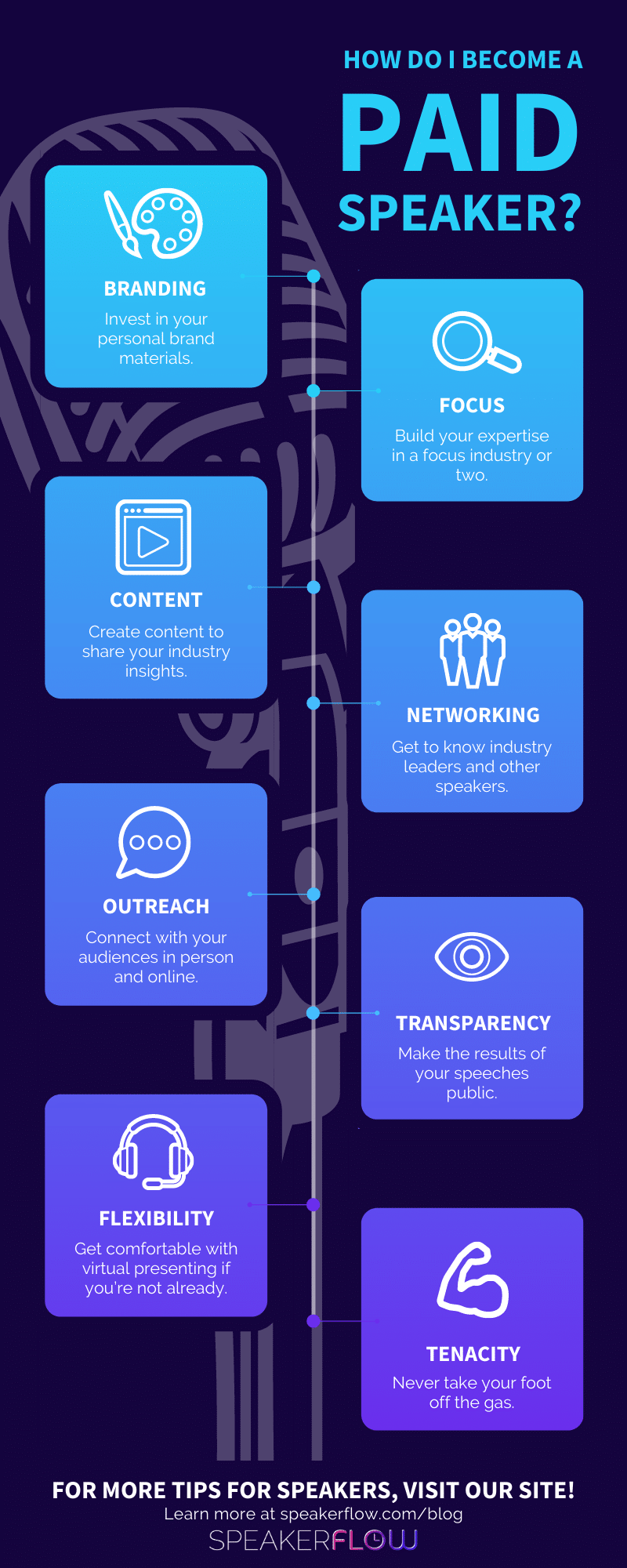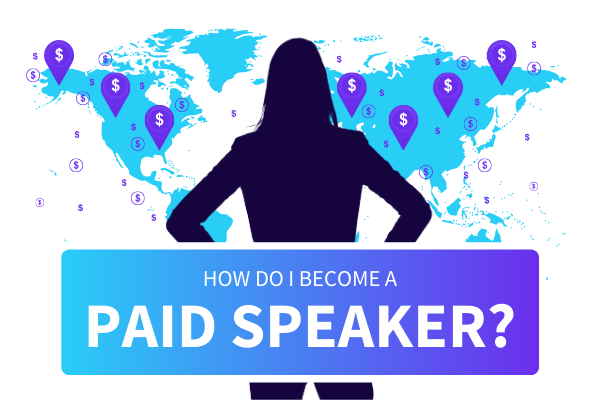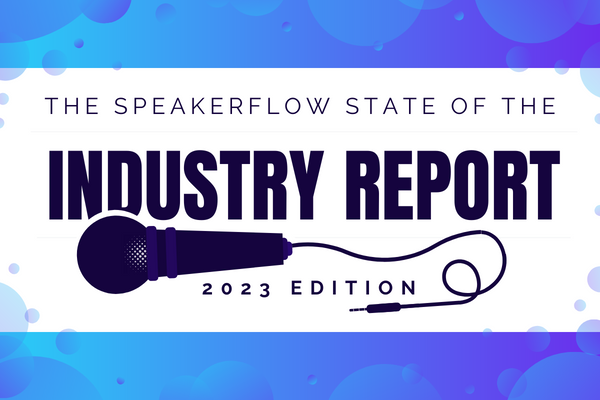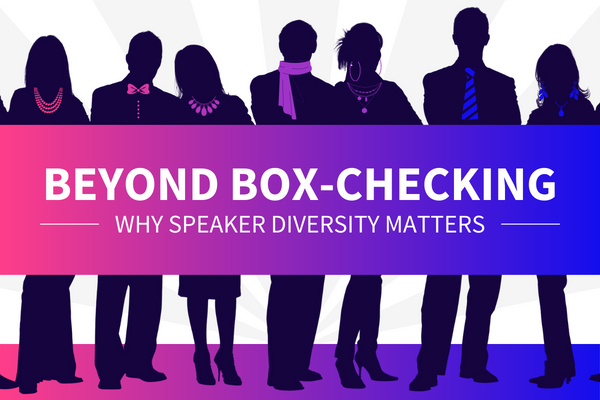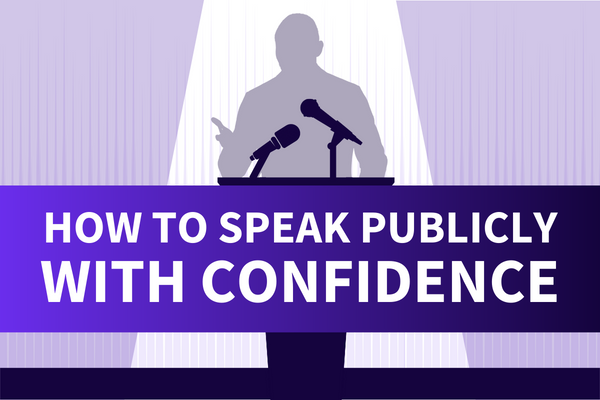When you find your dream job, the path to success can be long and winding, not to mention financially demanding. If you want to work for an environmental advocacy group, for instance, you may volunteer before applying for an open position. If you want to work at an animal hospital, you may volunteer at a humane society first. And, if you want to speak professionally, you may have to speak for free in order to build the experience that justifies speaking fees. However, in this case, the more you speak for free, the harder it may seem to break the cycle, leading many new speakers to ask, “How do I become a paid speaker?”
Essentially, becoming a paid speaker is about positioning yourself as an expert in your focus industry(ies). This includes building a personal brand and sharing content – specific to the industries you serve – through that brand. It also demands that you stay on top of speaking industry trends, build connections among speakers and within your area of expertise, and always strive to provide consistent, valuable content for your audiences.
Here, we’ll cover each of these steps to becoming a paid speaker. That way, even if you’re still speaking for free today, you can be on your way to paid speaking in the near future. 👍
- Invest in your personal brand materials.
- Build your expertise in a focus industry or two.
- Create content to share your industry insights.
- Network as much as possible with industry leaders.
- Connect with your audiences in person and online.
- Make the results of your speeches public.
- Get comfortable with virtual presenting if you’re not already.
- Never take your foot off the gas.
Invest in your personal brand materials.
Step #1 to become a paid speaker is all about laying the foundation for your speaking business, a personal brand. As any experienced speaker will tell you, the best brands grab potential clients’ attention, stand out from those of other speakers, and present the speaker as an expert, even if, in reality, they’re new to the game.

Considering your own brand, all of these attributes should be true in the visual elements of your business, such as fonts, colors, and graphic style. But, besides these details, it’s important to keep in mind that your personal brand is really much larger. It shouldn’t just look awesome. It should also feel like you, from the style of your branded materials to the language used on your website. In essence, it should be genuine, promoting transparency and authenticity and captivating event organizers, even if they’ve only ever come across your brand online.
Because of this vital role in your sales process – and its use throughout your business – it’s important to invest in your brand, both monetarily and in terms of time. Below is a brand “shopping list” to get you started.
- Brand and style guide (includes fonts, colors, graphic elements, language style, etc.)
- Website (including pages for “Home,” “About,” “Speaking Programs,” “Meeting Planner Resources,” “Content,” and “Contact.”)
- Speaking materials (biography, program descriptions, reasons to work with you, etc.)
- Photos (headshots and photos of you on stage)
Learn more about building your brand and creating any necessary branded materials in our ultimate guide to speaker marketing.
Build your expertise in a focus industry or two.
The second step to become a paid speaker is arguably the most time-consuming. However, it’s also undeniably important and, when done well, allows you to continually increase your speaking fees over the course of your speaking career. I’m talking about building your expertise within your areas of focus.

For many new speakers, their first impulse is to speak for as many audiences as possible. If your passion is sales, for example, it can be tempting to think, “Well, the topic of sales applies everywhere, so I can speak for anyone!” If everyone can benefit from your knowledge, why narrow your focus?
The answer can be summed up in one word: value. Although speaking across a variety of industries can sound appealing, as you expand your content to suit more audiences, the value of that content decreases. After all, if a presentation has to suit everyone, it can’t include many specifics. Plus, because you’re not extensively experienced in any specific field, it’s harder to demonstrate to event planners that you truly understand their specific audience.
So, in summary, if you want to become a paid speaker, choose a few areas in which to focus your sales efforts (we usually recommend three to five). Then, expand your authority in those areas, so you can realistically present yourself as an expert to audiences in them.
As we say among our own team, remember: You’re an expert first and a speaker second. Focus on building your prestige for the former, and your renown for the latter will inevitably follow.
Create content to share your industry insights.

Moving on, step #3 to become a paid speaker is simple: create, create, create. As we mentioned in step #2, a major reason event planners will pay for a speaker is because of that speaker’s expertise and depth of knowledge in their field. As a new speaker, creating content allows you to demonstrate that expertise and share it where event planners could come across your brand. This includes social channels and your website as well as with other leaders in your focus industry(ies).
If you’re new to creating content, now more than ever, the options are incredibly diverse. Whether you prefer writing, speaking, or appearing on camera, there’s a wide variety of ways to share information. Below are a few of the most common within the speaking industry along with ways you can work them into your business.
Print Content
The oldest form of content on this list, print content includes books, handouts, or any other forms of paper communication. These forms of content are generally best suited to in-person events. However, you can also make them available on your website in PDF form, should you choose. In many cases, speakers offer the other content in this list for free but only offer print content for a fee. This can be one-off, like for single book purchases, or as part of a bigger speaking package in which event attendees each get a copy of a book.
Blog Content
Digital content has been around for decades and is still going strong. As a speaker – especially as a solopreneur – writing blogs allows you to share the same depth of knowledge as you would in print materials but with a much wider audience. Through blogs, you can also share content quickly and easily and link to additional resources for your reader, such as the other content in this list or content from other leaders in your focus industry(ies). In order to attract the maximum number of readers to your blog content, we recommend search engine optimizing (otherwise called “SEO optimizing”) each blog article.
Podcasting
Unlike print or blog content, podcasts rely entirely on audio. Since they were created in 2003, podcasting around the world has rapidly grown, including among speaking business owners. The average speaker-run podcast, like a blog, focuses on information specific to their focus industry(ies) and is available for free. However, unlike blogs, podcasts almost always feature guest contributors. In your own business, as you build your expertise, we recommend that you contribute to podcasts and blogs in your areas of focus in addition to creating your own.
YouTube or Social Videos
Among the types of content in this list, perhaps the most popular is – surprise, surprise – video content. Compared to blogs and print content, video content tends to be much more eye-catching and shareable. Because it incorporates visual and auditory learning, for many people, videos can also be the easiest way to absorb information and retain it moving forward. In your content strategy, we recommend creating videos regularly, sharing them to both YouTube and social media channels, and SEO optimizing them before publication. You can also embed them in related blogs, so readers can choose how to engage with your content.
By creating each of these forms of content, you not only share your insights and present yourself as an industry expert. You also establish your dedication for any event organizers watching, as if to say, “See the high quality of my free content? Imagine how awesome my paid speaking programs are.” There’s no way they’ll blow off your fees after that.
Network as much as possible with industry leaders.

The fourth step to become a paid speaker centers around connection, namely connecting within your focus industries. As a new speaker, your first major milestone will likely be getting paid to speak – period. A few years later, however, the next major milestone will be earning at least half of your sales from referrals. For the most successful speakers, the fraction increases from that point forward until inbound inquiries make up the majority of their revenue. Sounds like the dream, right?
To get to this point, it’s crucial that you begin making connections within your focus industry as soon as possible. This includes content creators, as we covered in the last section. But, in a broader sense, it includes anyone leading their industry as a whole, especially people in a position of authority. Think C-suite executives, high-ranking members of the military or in education, and event organizers for large organizations.
In short, a core focus – before and after you become a paid speaker – has to be building relationships with other people in your field. Yes, many of these relationships will mean sharing content or your time for free, but, in the long run, the more relationships you’ve built, the more people will know your name. That means more paid gigs (for starters) from which you get more positive reviews from which you can demand higher fees. It’s a long play that pays off time and time again – guaranteed. 👌
Connect with your audiences in person and online.
Similar to step #4, the fifth step to become a paid speaker is about connecting with members of your ideal audience. With the rise of virtual speaking and social media, your audience, as a speaker, isn’t solely the people watching you speak live. It’s anyone that follows you on Facebook, Twitter, LinkedIn, or Instagram. It’s anyone who comes across a podcast or blog article in which you shared your insights. It sounds wild, but in all honesty, your audience is anyone that comes across you or your speaking business, in person or online.

Consequently, connecting with past – and potential – audiences has never been easier than it is right now. You can use social media posts or live conversations with people in your industry(ies) – whatever you’re most comfortable with, to start. Then, as you gain more followers and become more well-known, you can diversify the ways in which you reach out to them.
How does this relate to sales, you ask? Ultimately, while event organizers may factor a speaker’s resume into their decision, they’re also looking for someone who can excite their audience. They’re asking, “Who can keep people engaged for a prolonged period of time?” and “Who are they going to remember when the event itself is over?”
If you can connect with audience members directly while networking with other industry leaders, you’ll be the perfect answer to both of those questions. Plus, because some audience members already know you, they’ll be eager for your presentation well beforehand. Win, win!
Make the results of your speeches public.
Speaking of audience members, step #6 to become a paid speaker is sharing the impacts you’ve had on past audiences. In order to master this step, there are two big stats to keep in mind. First, roughly 95% of customers read reviews before making a purchase, and, second, more than 70% won’t even consider a purchase until they’ve read reviews. In other words, before the average person spends any money, they want to see proof that they’ll see a return on their investment.
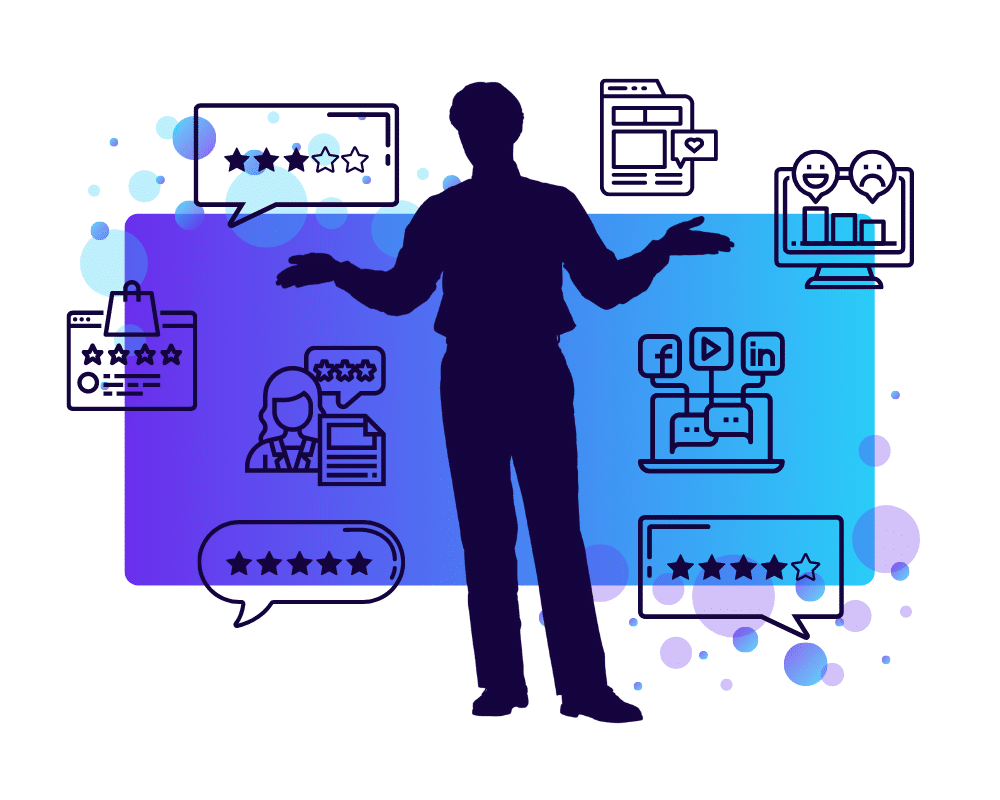
In the same way, on top of your ability to excite audiences and your professional credentials, event organizers want to see proof of successful past events. They want to know what return your attendees saw from your presentation, from the people in the audience to the decision-makers that hired you in the first place.
Among speakers, addressing this concern varies greatly, considering every speaker aims for different outcomes. Below are a few common examples from assorted speaking businesses.
- Increases in revenue or customer satisfaction
- Decreases in employee turnover
- Decreases in customer complaints or support tickets
- Improved employee morale or engagement
- Improved collaboration between executives and team members
Again, these are just a few examples of speaker-driven results. The most important thing to remember is to track as much data as you can. One tactic many speakers use, for instance, is a set of surveys, one before and one after the event, then one several weeks post-event. The questions in each of these surveys are typically identical, allowing the speaker to track the evolution of attendee’s answers before and after their intervention.
Whether you use this strategy or not is up to you. Just remember that the more data you have, the clearer your results and stronger your argument for “Hire me!”
Get comfortable with virtual presenting if you’re not already.
Next up, the seventh step to become a paid speaker relates to trends within the speaking industry, specifically virtual speaking.
Even before the coronavirus pandemic hit, virtual speaking was on the rise. We’ve seen virtual webinars, keynotes, lectures, presentations – even full-blown events, conducted entirely online. Now, even more so than before COVID-19, event planners continue prioritizing virtual events for a number of reasons.

For one thing, hosting a virtual event is considerably cheaper than hosting a live one. There’s no venue, food, or travel costs for the planner or attendees, allowing the former to lower the ticket cost for the latter. Add that to the potential for increased attendance (because of the lower admission cost), and it’s easy to see why planners are keeping virtual options around.
Additionally, from a speaking standpoint, virtual speaking can be much more convenient than speaking live. Like attendees, you don’t have to travel, allowing you to schedule virtual bookings close together. You also don’t have to leave your home if you choose to set up a studio there. This gives you more time with friends and family when you may otherwise have been on the road.
All of this said, virtual speaking is not going away any time soon. In fact, if anything, it’s only continuing to increase, simultaneously driving the demand for virtual speakers up and up. With that in mind, if you want to become a paid speaker, don’t just focus on mastering on-stage speaking. Take the time to master the virtual side, too.
Never take your foot off the gas.
Last but not least, the final step to become a paid speaker is to always – and I mean always – improve. Over the last several years, as virtual speaking has become more and more popular, speaking as a whole has become more accessible. Nowadays, anyone that wants to be a speaker can be, no matter how they grew up, what their primary job is, or what they want to be down the road. For you, that means more competition.

So, if you want to not only become a paid speaker but also stand out, remember “ABC”: always be correcting. If your brand is outdated, refresh it. If your sales strategies aren’t working, try new ones. And, if you’re falling behind speaking industry trends, get to it!
Strive to be the best version of yourself as a speaker, expert, and business owner, and the opportunities will follow. Just stay the course and stay passionate about your speaking topics, and success will come.
For more information about starting a speaking business, check out our detailed guide for aspiring speakers.
Additionally, for more resources to guide you to speaking success, join SpeakerFlow University! It’s jam-packed with community engagement, exclusive content, and industry-wide encouragement. That way, even if it takes some time to build your reputation, you’ll have support to keep you goin’. 🎉
